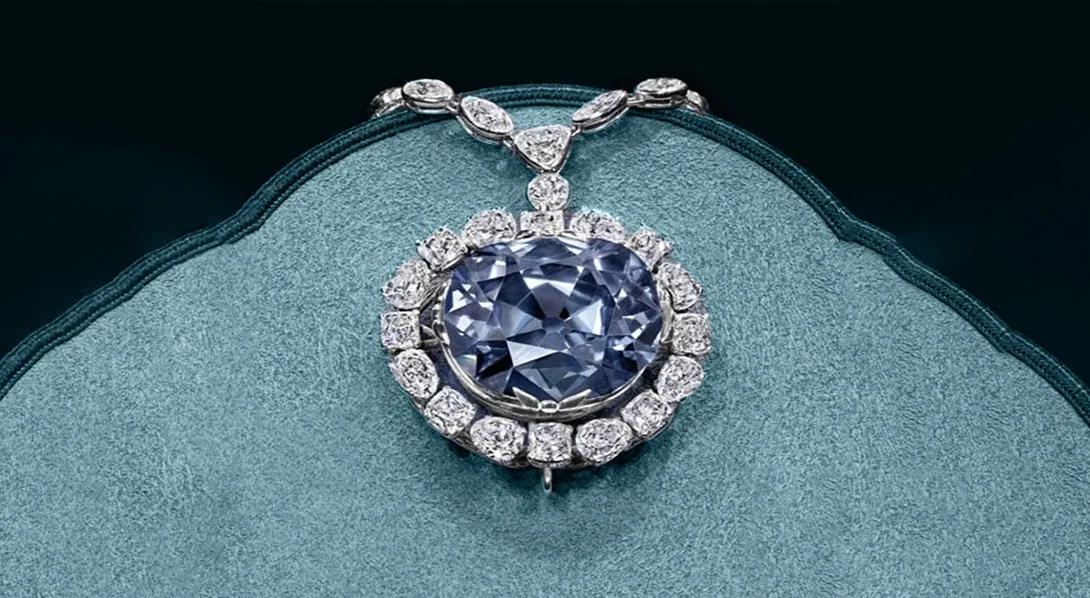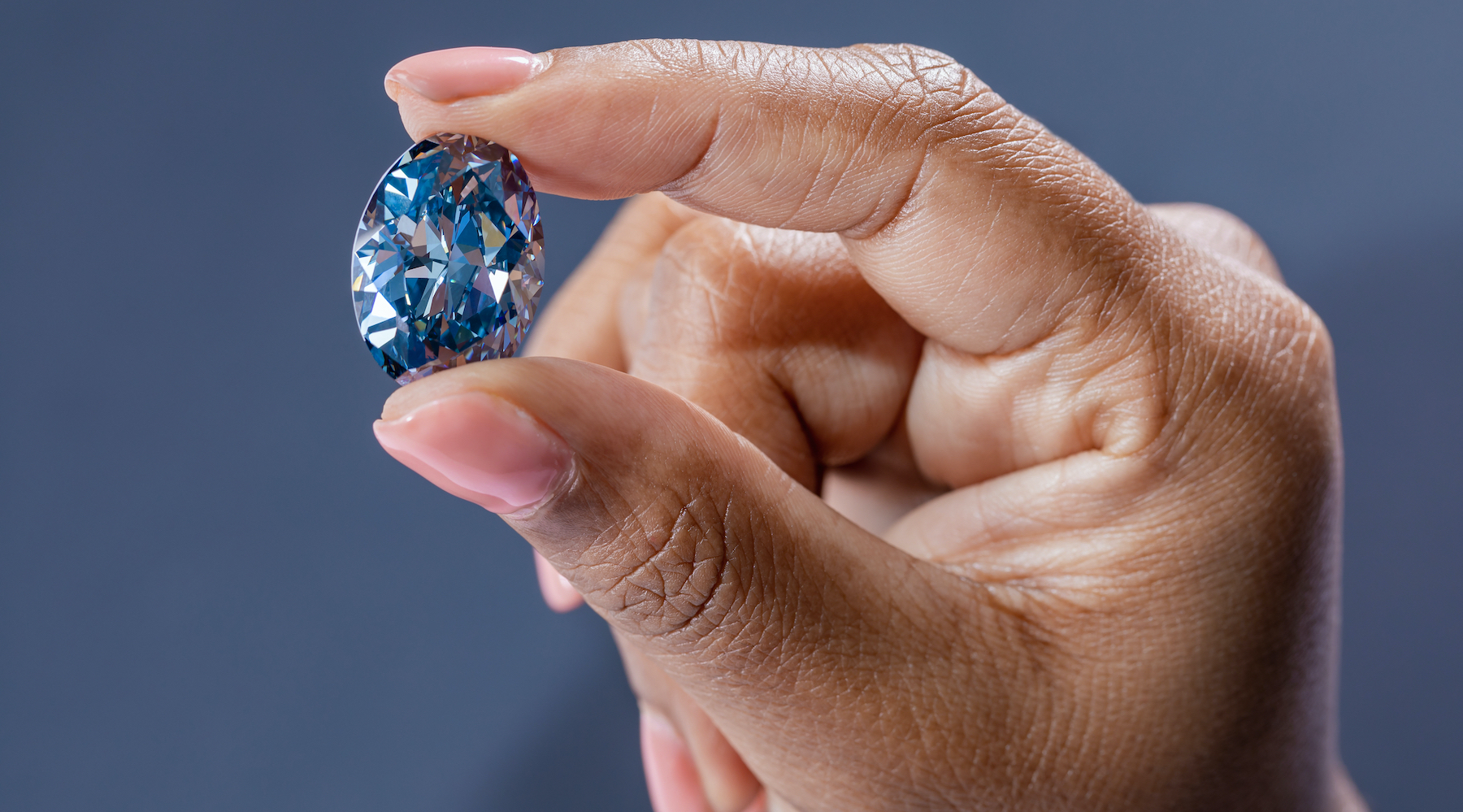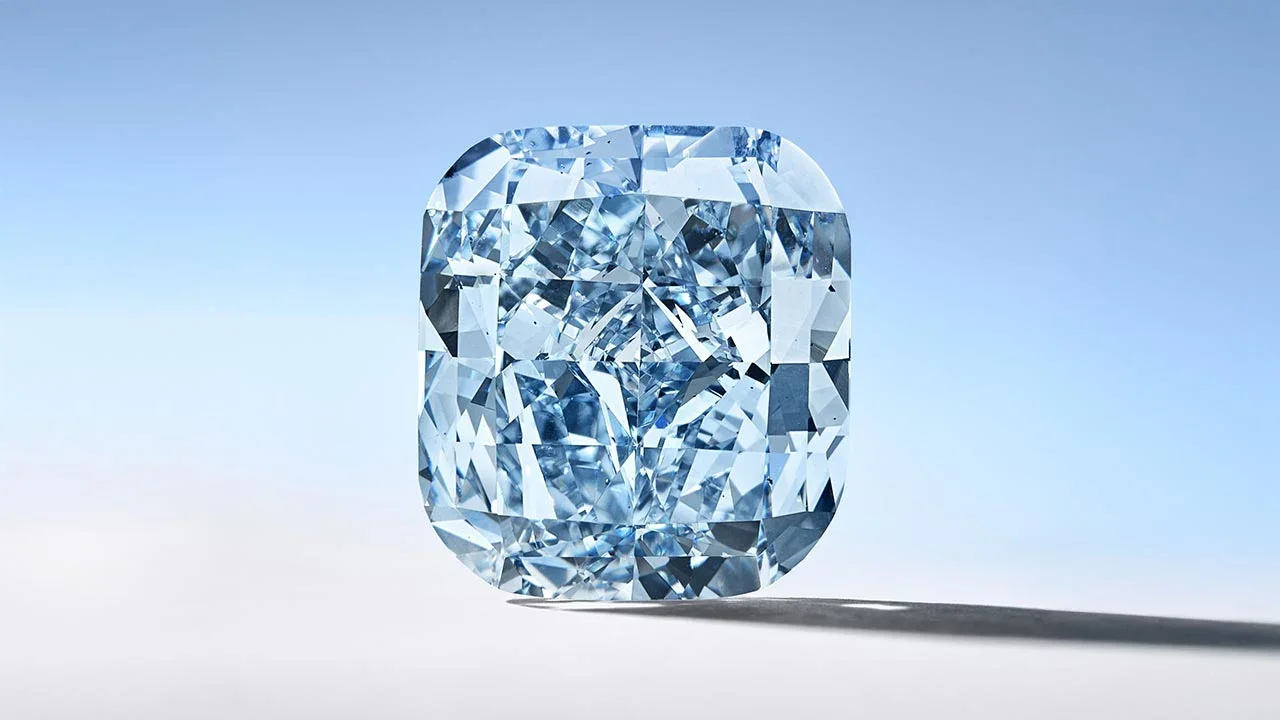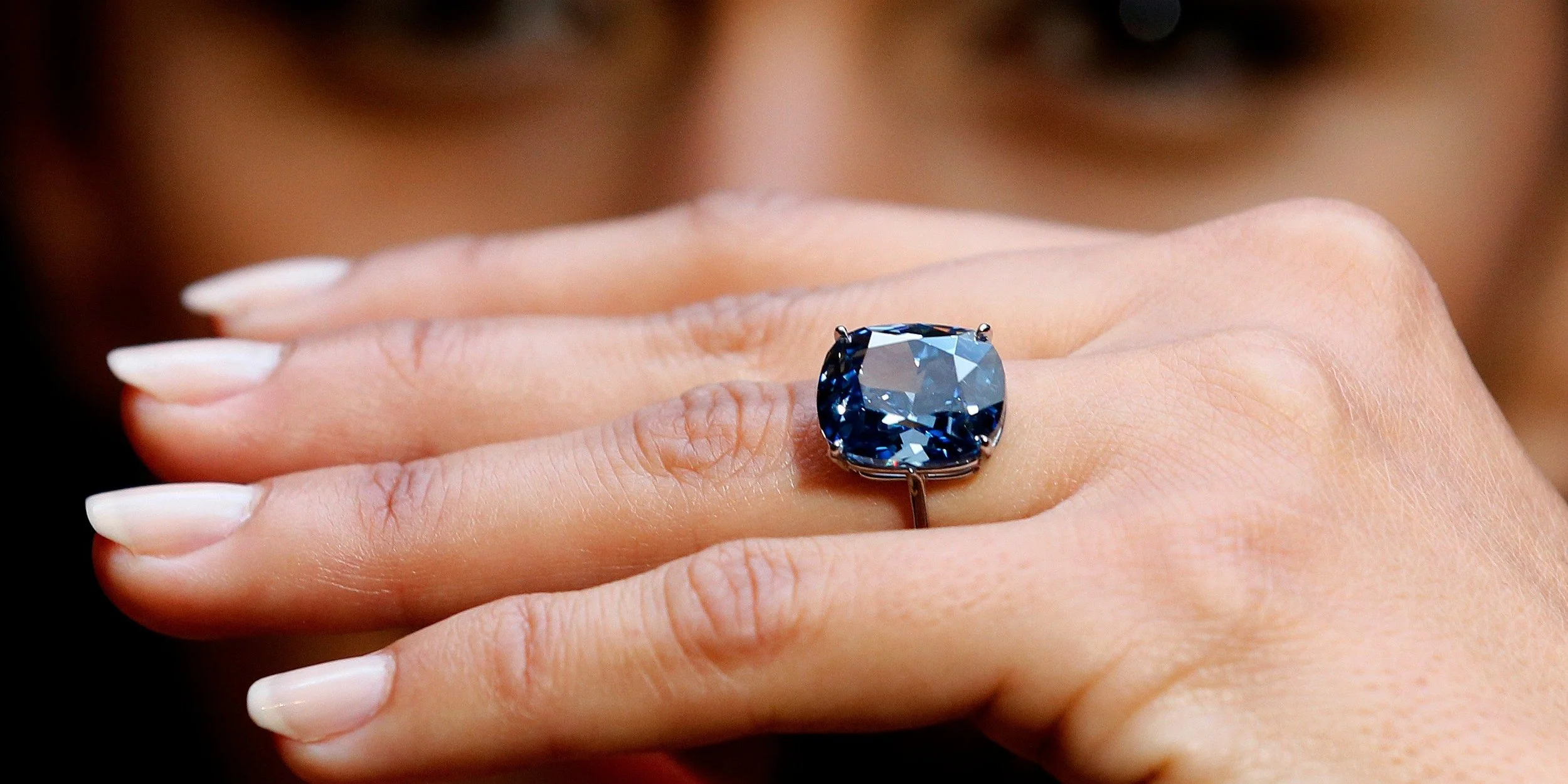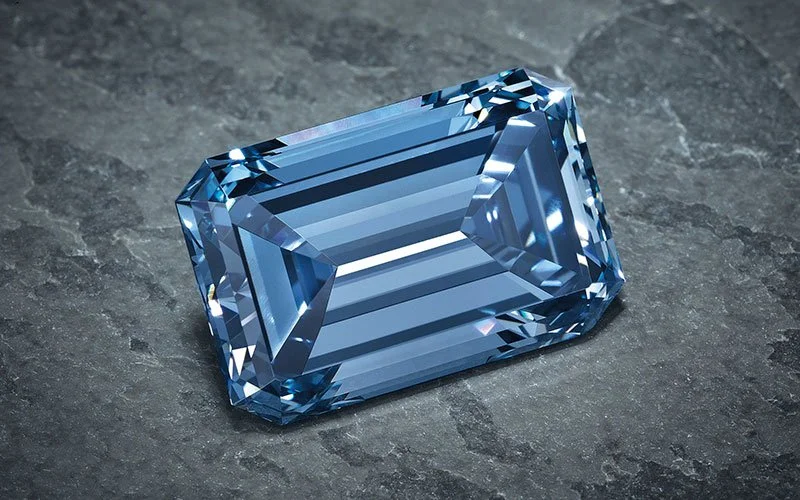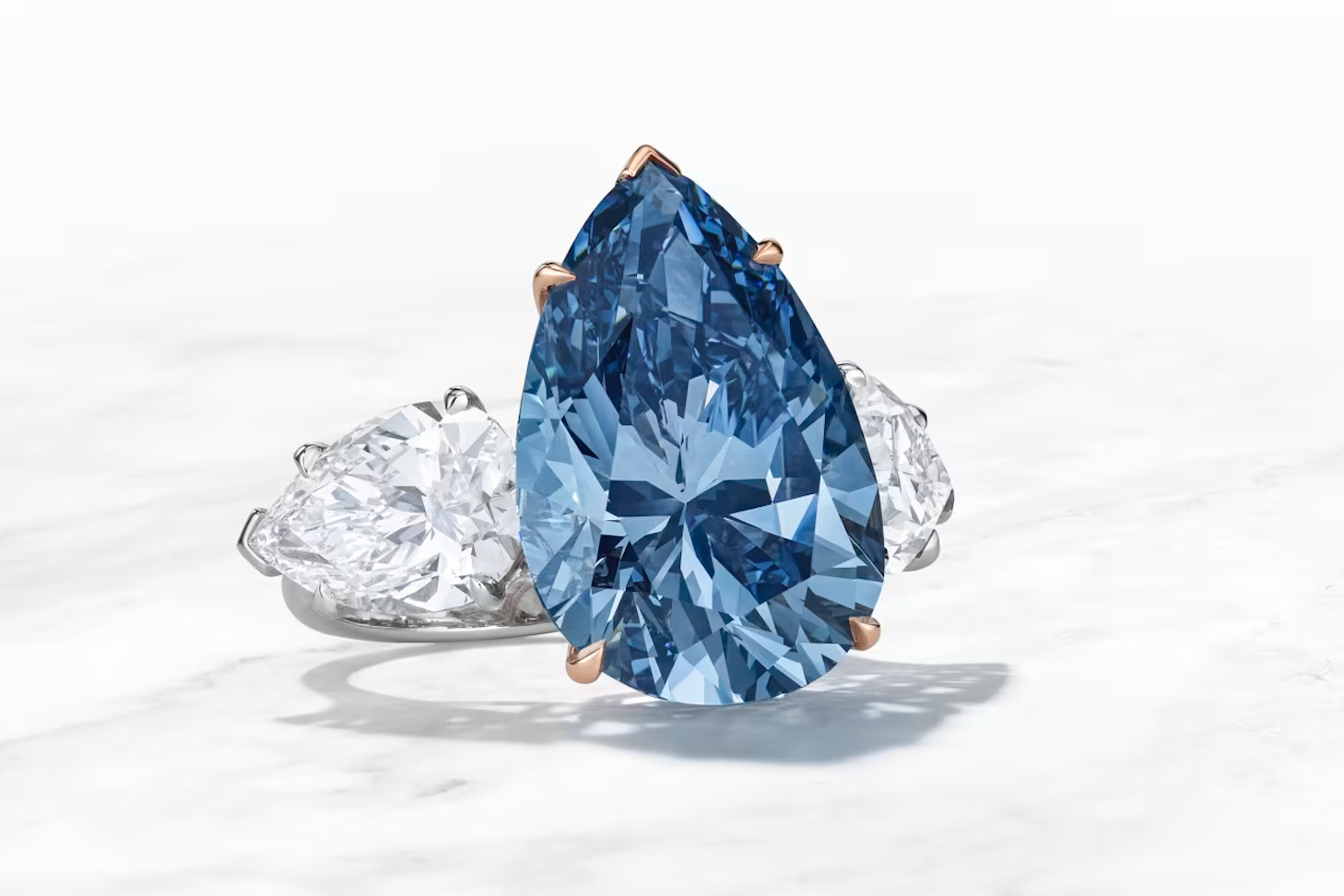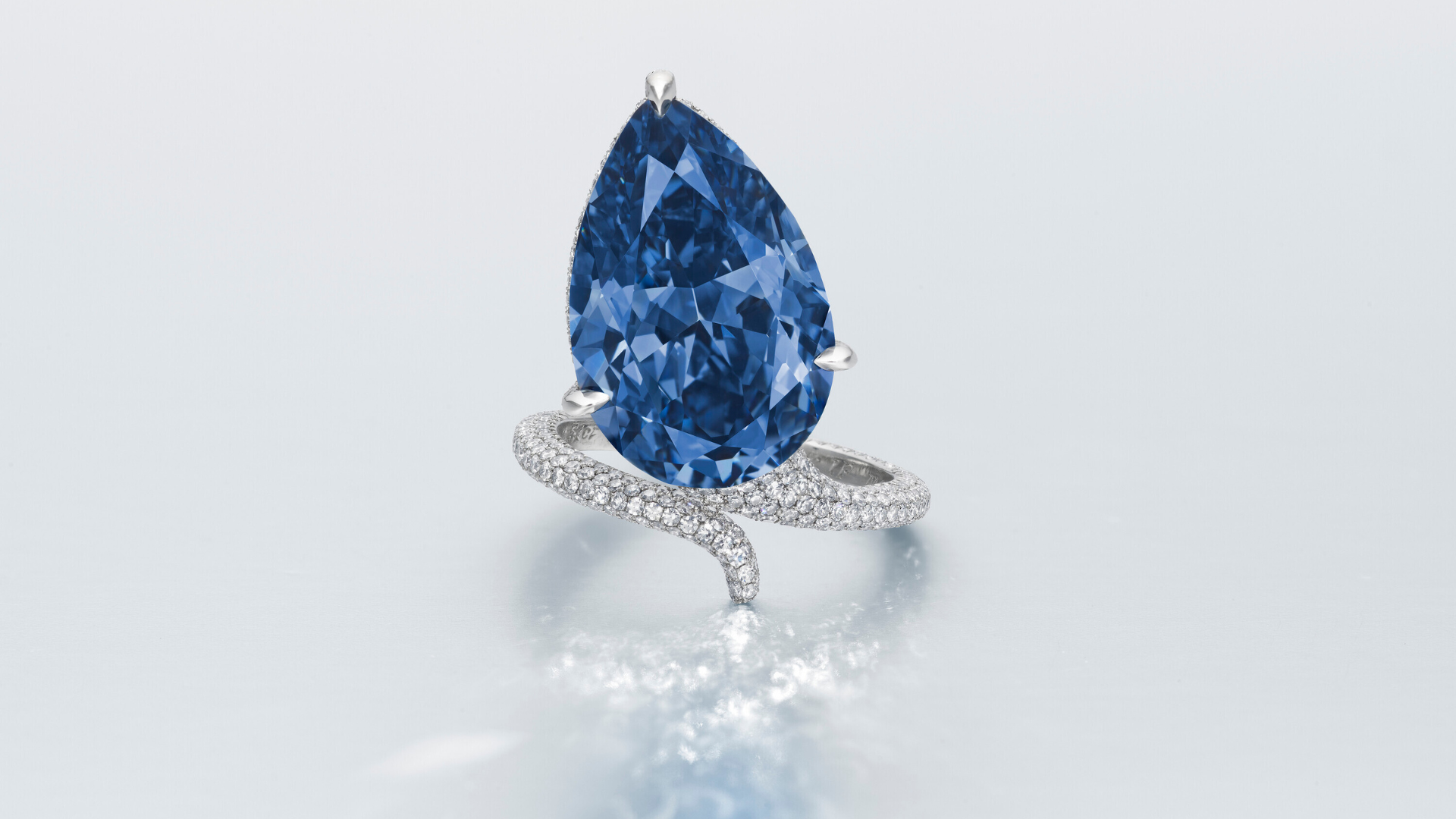Blue Diamonds
The Allure of Blue Diamonds
Among the rarest and most revered gemstones on Earth, the blue diamond embodies mystery, luxury, and timeless prestige. Its mesmerising shades, ranging from delicate sky tones to the deep intensity of ocean blue, often display subtle grey undertones that enhance their sophistication. For centuries, these rare gemstones have fascinated collectors, connoisseurs, and high jewellery maisons alike. Unlike colourless diamonds, blue diamonds owe their striking hue to trace elements of boron, a rare chemical element that combines with carbon deep within the Earth under immense pressure, at depths nearly four times greater than where most diamonds form.
What Is a Blue Diamond?
A blue diamond is a natural fancy-coloured diamond that displays a spectrum of blue hues, from the palest sky blue to rich, vivid tones. Unlike sapphires, which derive their colour from corundum, blue diamonds belong to the diamond family and share the same exceptional hardness, brilliance, and optical properties as their colourless counterparts. Their unique colour is the result of boron atoms incorporated into the diamond’s crystal lattice during formation, creating an extraordinary interplay between light and structure.
Blue diamonds fall under the category of fancy colour diamonds, meaning their value is determined primarily by colour intensity rather than clarity or carat weight. Unlike treated or laboratory-grown alternatives, which achieve colour through artificial methods, natural blue diamonds are created through extremely rare geological conditions that occur deep within the Earth’s mantle. This makes them one of the most exceptional natural phenomena in the gemstone world.
How Blue Diamonds Get Their Colour
The formation of blue diamonds is a geological marvel that takes place over billions of years. While most diamonds are composed purely of carbon, blue diamonds contain trace amounts of boron, which replaces some of the carbon atoms in their structure. This chemical interaction causes the gem to absorb red and yellow wavelengths of light, resulting in the brilliant blue colour that makes them so desirable.
The precise origin of boron in the Earth’s mantle remains a scientific mystery. Geologists suggest that boron may have entered the mantle through ancient subduction zones, where oceanic plates carrying boron-rich materials were forced deep beneath the Earth’s surface. The Gemological Institute of America (GIA) also notes that some blue diamonds may owe their colour to radiation or the presence of hydrogen. Whatever the source, the combination of intense heat, pressure, and rare elemental conditions makes the formation of blue diamonds extraordinarily uncommon, placing them among the world’s rarest natural gemstones.
The Rarity of Blue Diamonds
Blue diamonds are exceptionally rare, representing only a minute fraction of all diamonds mined globally. Unlike colourless diamonds, which are found in numerous locations around the world, blue diamonds are sourced from only a few known deposits, making each discovery a momentous event in the gemstone trade.
The most renowned source of blue diamonds is the Cullinan Mine in South Africa, which has produced several of the most famous stones in history. Other known sources include the legendary Golconda mines of India and the now-closed Argyle Mine in Australia, though production from these sites has been minimal. Because of their extreme scarcity, blue diamonds rank among the most exclusive fancy colour diamonds, alongside red and pink stones, and are highly sought after by elite collectors and investors.
The Value of Blue Diamonds
Blue diamonds command some of the highest prices per carat in the world of fine gemstones. Their value is influenced by a combination of factors, including hue, saturation, carat weight, clarity, and cut. Even small, well-coloured blue diamonds can achieve extraordinary prices at auction, often exceeding millions of pounds per carat.
The most valuable examples are those classified as Fancy Vivid Blue, displaying an intense, saturated tone with exceptional brilliance. Stones of this calibre are considered masterpieces of nature, with famous examples such as the Hope Diamond estimated to be worth hundreds of millions. Their rarity, coupled with their undeniable beauty, ensures that blue diamonds remain among the most coveted investment assets in the global luxury market.
How Blue Diamonds Are Graded
Blue diamonds are graded according to the GIA’s internationally recognised system, which assesses hue, tone, and saturation. The depth and vibrancy of colour determine a diamond’s category, from delicate Fancy Light Blue to the exceptional Fancy Vivid Blue. These grades help establish the stone’s rarity and market value.
Some blue diamonds also contain secondary hues, such as greyish-blue or greenish-blue, which can subtly influence their appearance and worth. However, pure blue diamonds without any modifying tones are the rarest and most highly prized. Whether admired for their beauty, geological rarity, or investment potential, blue diamonds stand as one of the most extraordinary expressions of nature’s artistry in the world of precious gemstones.
Famous Blue Diamonds
The Hope Diamond
The Hope Diamond is perhaps the most famous blue diamond in the world. Weighing 45.52 carats, it is celebrated for its rich, velvety blue hue and fascinating history. Originally discovered in India, this legendary gemstone passed through the hands of French royalty and British aristocrats, acquiring an aura of mystery and myth along the way. Today, it is housed in the Smithsonian Institution in Washington, D.C., where millions of visitors admire its extraordinary beauty each year. The Hope Diamond remains a timeless symbol of prestige, elegance, and enduring fascination.
The Hope Diamond (Courtesy of BriteCo)
The Okavango Blue
Discovered in Botswana’s Orapa Mine, the Okavango Blue is a 20.46-carat fancy deep blue diamond of exceptional rarity and brilliance. Named after Botswana’s UNESCO-listed Okavango Delta, this gemstone represents both natural wonder and ethical excellence. Showcased by the Okavango Diamond Company, the diamond remains within Botswana as a national treasure—a shining testament to the country’s growing prominence in the global diamond industry.
The Okavango Blue (Courtesy of Natural Diamond Council)
The Blue Heart Diamond
The Blue Heart Diamond is a 30.62-carat heart-shaped fancy blue gem renowned for its romantic symbolism and vivid hue. Currently displayed at the Smithsonian Institution, it stands among the finest examples of nature’s artistry, perfectly combining beauty, craftsmanship, and rarity. Its graceful cut and luminous tone continue to inspire admiration among gem collectors and enthusiasts worldwide.
The Blue Heart Diamond (Courtesy of Collectissim)
The Mediterranean Blue
The Mediterranean Blue is a 10.03-carat cushion-cut Fancy Vivid Blue diamond renowned for its exceptional saturation and clarity. Discovered in 2023 at South Africa’s historic Cullinan Mine, the diamond originated from a 31.94-carat rough stone that underwent over a year of study and six months of meticulous cutting to achieve perfection. Classified as Type IIb—an ultra-rare category representing less than 0.5% of all diamonds—it exemplifies nature’s ultimate precision.
In May 2025, this breathtaking gemstone made headlines at Sotheby’s High Jewellery auction in Geneva, where it sparked an intense bidding war before selling for $21.5 million, surpassing its pre-sale estimate and becoming the most valuable jewel sold that year.
The Mediterranean Blue (Courtesy of Sotheby’s)
The Blue Moon Diamond
Weighing 12.03 carats, the Blue Moon Diamond is one of the most vivid and flawless blue diamonds ever discovered. Its remarkable colour intensity and internal perfection make it one of the rarest gems on Earth. Sold at auction for $48.5 million, it achieved one of the highest prices per carat ever recorded for a blue diamond, marking its place in history as an icon of rarity and excellence.
The Blue Moon (Courtesy of Luxuo)
The Oppenheimer Blue
The Oppenheimer Blue, weighing 14.62 carats, is one of the largest Fancy Vivid Blue diamonds ever sold at auction. Named after its former owner, Sir Philip Oppenheimer, this remarkable gem achieved $57.5 million at Christie’s Geneva in 2016, setting a world record at the time. Its intense colour and refined proportions make it one of the most recognisable and valuable blue diamonds in existence.
The Oppenheimer Blue (Courtesy of Christie’s)
The Winston Blue Diamond
At 13.22 carats, the Winston Blue Diamond holds the distinction of being the largest Fancy Vivid Blue diamond ever graded by the Gemological Institute of America (GIA). Purchased by Harry Winston, this extraordinary gem sold for $23.8 million in 2014. Its pure, radiant hue and impeccable clarity encapsulate the timeless elegance and rarity that define blue diamonds at the highest level.
The Winston Blue Diamond (Courtesy of Barron’s)
The Mellon Blue Diamond
The Mellon Blue Diamond is a stunning 9.75-carat Fancy Vivid Blue gem with impeccable clarity and symmetry. Formerly part of the collection of philanthropist Rachel Lambert Mellon, it represents both refined taste and natural rarity. Sold at auction in 2014, it achieved $32.6 million, reaffirming the market’s unrelenting demand for exceptional blue diamonds. Its elegant brilliance continues to stand as a benchmark for connoisseurs and collectors worldwide.
The Mellon Blue (Courtesy of Natural Diamond Council)
